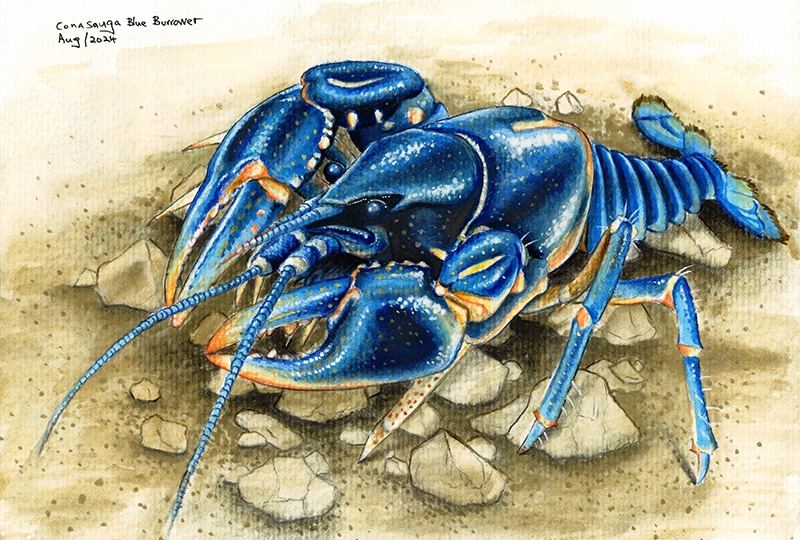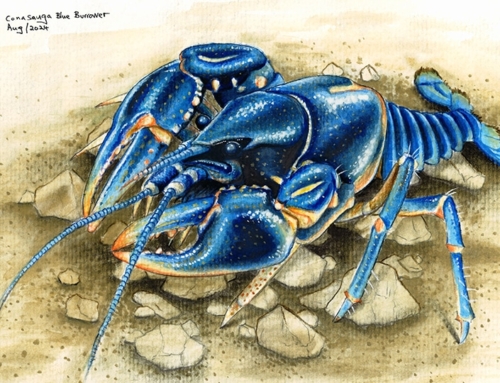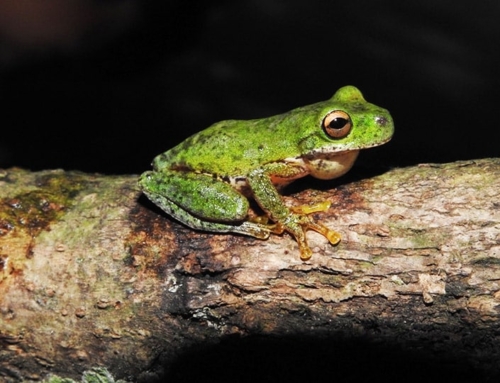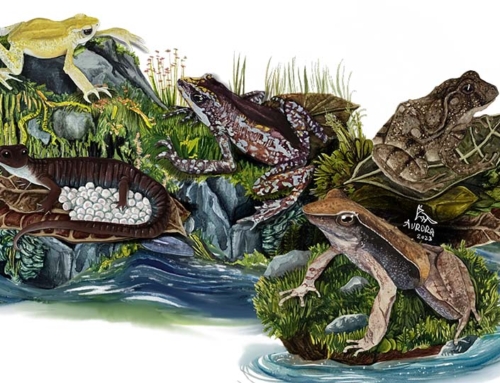The first global assessment of freshwater animals across multiple taxonomic groups has revealed that one quarter of the 23,496 freshwater species surveyed by the IUCN Red List of Threatened Species™ are threatened by extinction.
The research included decapod crustaceans (shrimp, crabs, and crayfish), odonata (dragonflies and damselflies), and fish, and revealed that these are primarily under threat from pollution, dams, water extraction, agriculture, invasive species, and overharvesting.
This watershed report, published in Nature, underlines the urgency of the freshwater biodiversity crisis and identifies the priorities for immediate action.
The United Nations Sustainable Development Goals (SDGs) focus on life on terrestrial (SDG 15: life on land) and marine (SDG 14: life below water) ecosystems. Although freshwater is included in SDG 15’s targets, freshwater is frequently buried by terrestrial conservation concerns, and so often forgotten in plans to protect and restore nature, despite its importance.
Lack of easily available research is part of this issue. Vital data from the International Union for Conservation of Nature (IUCN) Red List assessing the conservation status of birds, amphibians, and mammals has been available for over 15 years and provides a strong backbone for policy and decisions affecting biodiversity around the world. The first global reptile assessment was only completed recently, and freshwater fishes and invertebrates have also historically been left behind.
This monumental research effort (which took over 20 years with input from more than 1,000 scientists) summarises the extinction risk, distribution, key habitats, and primary drivers of decline of freshwater species, all of which can be found on the online IUCN Red List.
“Synchronicity Earth specialises in supporting overlooked challenges in conservation,” says Julie Thomas, Head of Conservation Programmes at Synchronicity Earth. “The Global Freshwater Fauna Assessment represents not only a fundamentally under-funded group of species and ecosystems, but also the importance of research to drive effective conservation action.
“Our Freshwater Programme has supported the IUCN Biodiversity Assessment and Knowledge Team (BAKT) for 11 years, and although this research provides a stark wake-up call, we are so proud of their achievement in publishing this vital paper.”

Crayfishes are among the most imperilled animal groups in North America’s freshwater wildlife. This is the Endangered Conasauga blue burrower, featured in our ‘Seven species bringing the freshwater assessment to life’ series by artist Van Wangye Shiming. Image: Van Wangye / Synchronicity Earth CC BY-NC-ND 4.0
Diving into the numbers: Threats to freshwater species
The primary threats to freshwater life are caused by habitat loss and degradation: 54% of threatened species are impacted by pollution; 39% by dams and water extraction; 37% by land use change and associated impacts from agriculture (from subsistence to agro-industry scales, excluding aquaculture; noting the threats of pollution and agriculture are strongly linked); and 28% by invasive species and disease.
For dragonflies and damselflies, agriculture (61%) and logging (57%) are the two main threats; whereas for freshwater crabs, crayfishes, and shrimps, it is pollution (60%). Pollution is also the primary threat to freshwater fishes (59%), with runoff from agriculture and forestry as the main sources (45%), followed by domestic and urban waste waters (29%). 46% of freshwater fishes are threatened by water management such as dams and water extraction, which block migration routes, impact water quality and flow, and many other dangerous alterations to their habitats.
89 of the assessed freshwater species, including 82 fishes, are reported to have gone extinct. A fifth of species assessed as Critically Endangered (187 species) are labelled as Possibly Extinct or Possibly Extinct in the Wild. Given that close to a quarter of the species were assessed as Data Deficient, there is still a huge lack of research and long-term monitoring which means that there have likely been many more unrecorded extinctions.

As a migratory species with a range across the European continent in both freshwater and marine waters, the Critically Endangered European Eel represents the importance of international cooperation in species conservation. Image: Van Wangye / Synchronicity Earth CC BY-NC-ND 4.0.
Time to take action
The paper contains a powerful call to action for freshwater species:
“Given around a quarter of freshwater species are at high risk of extinction, with close to 90 extinctions already reported, there is urgency to act quickly to address threats in order to prevent further species declines and losses. Lack of data on the status and distribution of freshwater biodiversity can no longer be used as an excuse for inaction.”
Although some of the threats to freshwater ecosystems overlap with those for terrestrial ecosystems, there are many which are specific to freshwater species which need targeted action, notably pollution, dams, and water extraction.
These will require systemic change above species-specific and local actions: changes in water management at a landscape scale to make sure wildlife conservation is truly integrated with the water sector. But the paper is optimistic that “This connection and collaboration should be solutions focussed, for example using nature-based solutions to offer developments that simultaneously benefit biodiversity and human well-being.”

One of the stories behind an ‘Extinct in the Wild’ species is actually one of great optimism, thanks to conservation efforts. Since being classified as Extinct in the Wild in 2018, 1,000 golden skiffia were reintroduced to the Río Teuchitlán in Mexico by SHOAL and partners. Image: Van Wangye / Synchronicity Earth CC BY-NC-ND 4.0
More than numbers: Stories of the species
The Global Freshwater Fauna Assessment is an essential tool for conservation; a remarkable feat of research that will provide a strong scientific case for taking action for these overlooked species, as the Global Amphibian Assessment has been for amphibians.
However, the global perspective of thousands of species summarised by numbers and threat levels makes it hard to relate to each of the species assessed as a biological marvel with its own history of resilience in our changing world, with fascinating stories and unique beauty.
To bring these numbers to life, Synchronicity Earth and IUCN BAKT worked with wildlife illustrator Van Wangye Shiming. We focused on seven individual species’ stories within the 23,496 assessments, which pulled out some of the themes across the research, such as the cultural significance of freshwater species, the importance of free-flowing rivers, and the protection of karst habitats.
The abundance of life in freshwater habitats is estimated to have fallen by 83% between 1970 and 2014 (WWF, 2018), and the species assessment illustrates how that is affecting individual species’ risk of extinction. Our Freshwater Programme is committed to altering the course of freshwater conservation through protecting species, empowering people, and advancing knowledge.
If you are interested in supporting this work, please get in touch.






